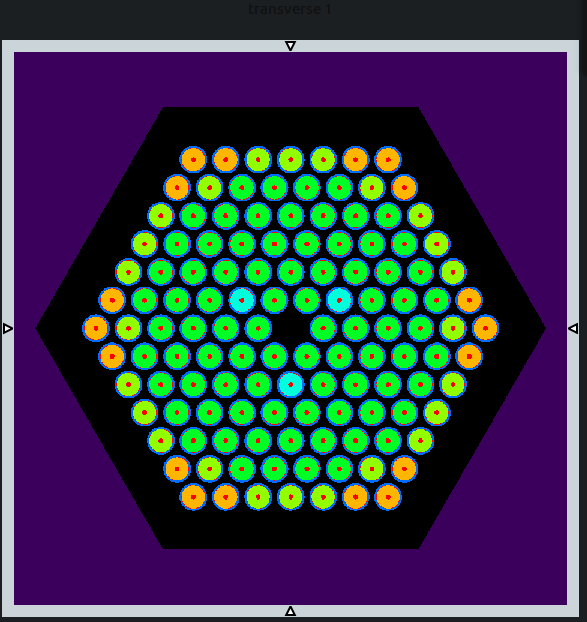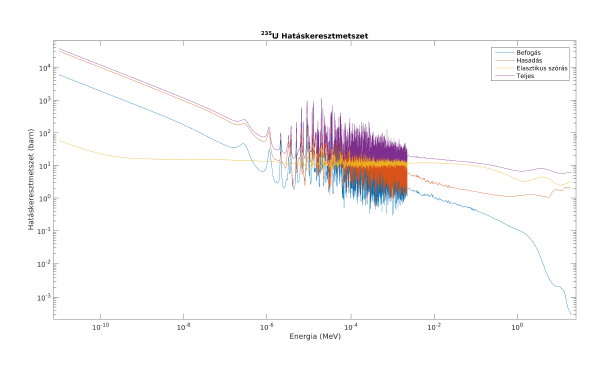| Version 8 (modified by , 8 years ago) ( diff ) |
|---|
GUARDYAN Basic Features
Aims
GUARDYAN simulates the time evolution of fission chains. The neutrons are followed from the beginning to the end of a time interval. This tracking philosophy differs from the usual source convergence calculations where neutrons are followed from generation to generation, i.e. from fission event until the next fission event. The source term for GUARDYAN is a "snapshot" of the neutron population at a time instance consisting of delayed neutron precursors waiting to "hatch" and prompt neutrons crossing the time boundary. The time dependent changes in the neutron population may originate from time dependent changes of the cross sections either as change of a material or of the temperature of a certain material. The current version of GUARDYAN is not capable of simulating thermal or any other feedback this feature is planned for future releases.
Software and Hardware Environment
A code written in CUDA/C++ is basically separated responsible for reading cross section data from the input, the second for host side tasks, the third part is the GPU kernel which runs the simulation. Currently the host side code consists of cca. 65000 lines and the device side code consists of cca. 5000 lines.
Dependencies: CUDA: 8.0, NVIDIA driver: 375.66, GCC: 5.4.0, Qt: 5.5.1
Hardware: 2 x Geforce GTX 690, 4 x Geforce GTX 1080
Features
Geometry descriptors
In order to run simulations on a real reactor geometry we need to create the tools for defining geometry. Similarly to other particle transport codes (Serpent, MCNP, OpenMC) in GUARDYAN geomety is defined by cells containing isotopes. Cells are defined by bounding surfaces. These data can be given in xml files.
Surfaces
In the current version general positioned sphere, plane and infinite cylinder are supported in special cases according to Table 1. More surface types are added in later releases.
Cells
Cells may be defined as an intersection or union of spaces divided by surfaces. Cells may be filled into either rectangular or hexagonal lattices.
Fig. 1. Fuel rods in a hexagonal lattice
Isotopes and Cross Sections
Cells are considered homogeneous and filled with a single material defined by the isotopes, their relative abundance and material density. Cross sections are read from ACE format files.
Fig. 2. Cross section of U-235 as read by GUARDYAN In current implementation we store the energy partition separately for every isotope. To find the cross section of a neutron with given energy we use binary search and linear interpolation.
GUARDYAN createS materials from isotopes using the fraction of the constituent in the material and the material density. Before the simulation GUARDYAN generates the total macroscopic cross sections and the majorant cross sections (for the Woodcock method) for every material.
Memory Use of Cross Section Data
Variance Reduction
Dynamic Capabilities
Validation
Project Participants & Contacts
Funding
Attachments (10)
- table1.png (48.8 KB ) - added by 8 years ago.
- VVER440_v1.png (21.8 KB ) - added by 8 years ago.
- XS.png (30.8 KB ) - added by 8 years ago.
- UO_H2O_rods_material-map.png (45.1 KB ) - added by 8 years ago.
- UO_H2O_rods_16timestep_z-sum.png (195.9 KB ) - added by 8 years ago.
- UO_H2O_rods_surf_z-sum_wiener.png (975.6 KB ) - added by 8 years ago.
- traject.png (69.9 KB ) - added by 8 years ago.
- TDMCC_varP_analog_vs_nonanalog.png (61.8 KB ) - added by 8 years ago.
- NRDI.jpg (34.8 KB ) - added by 8 years ago.
- Guardyan_surfaces.png (66.7 KB ) - added by 3 years ago.
Download all attachments as: .zip


